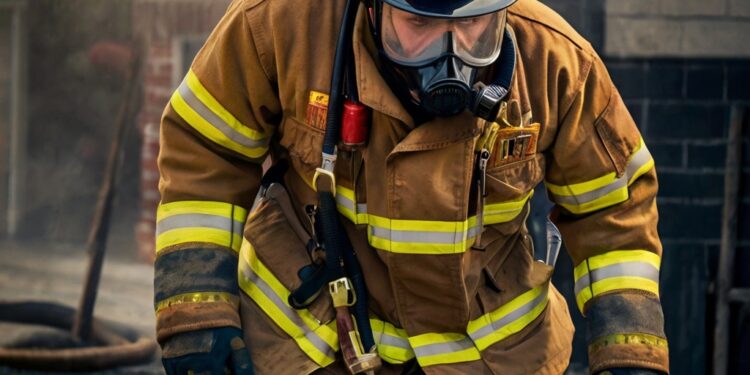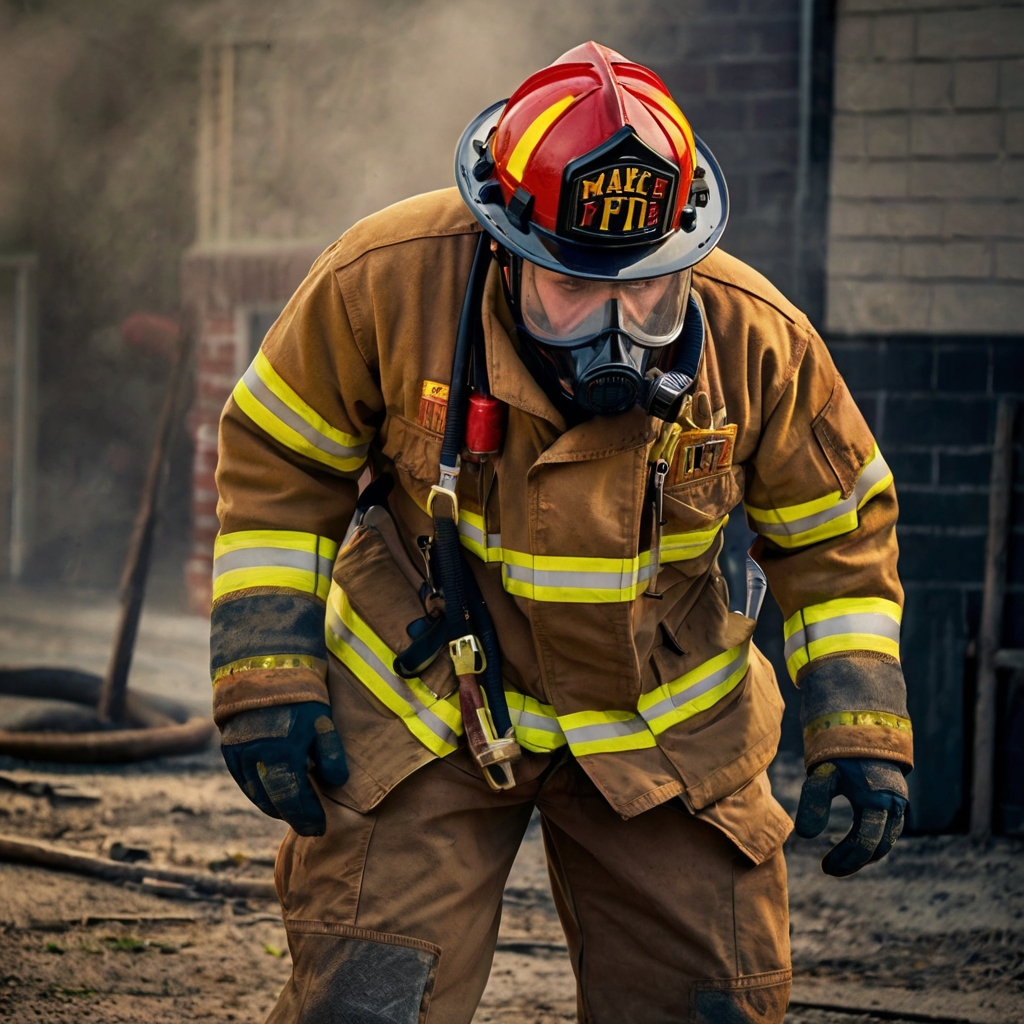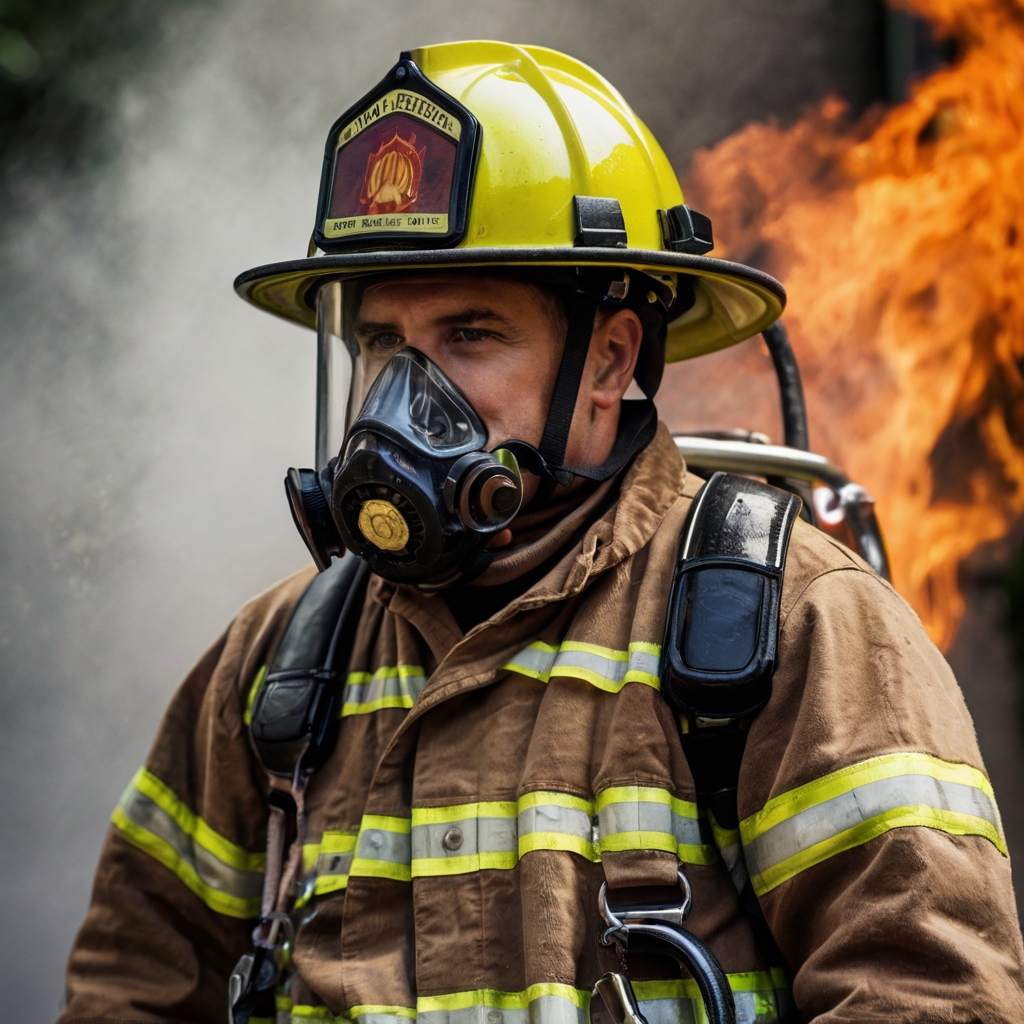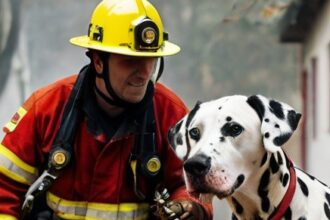Small Town Fire Department Training Ideas

Volunteer firefighters make up 65% of all U.S. firefighters, making their training a significant priority. The National Fire Protection Association (NFPA) reported 1,041,200 firefighters nationwide in 2020. These dedicated volunteers must perform at the same level of skill and expertise as their career counterparts.
Small town fire departments face unique challenges when implementing training drills effectively. The departments must optimize limited resources while meeting the recommended two hours of daily training. A typical training session runs 2-3 hours and blends classroom instruction with hands-on skills practice. Creative and unconventional drills help firefighters build their agility and composure under pressure. The U.S. Bureau of Labor Statistics projects roughly 28,000 firefighter openings yearly from 2021 to 2031. This growth makes innovative training approaches vital to strengthen departmental capabilities and ensure community safety.

Table of Contents
- 1 Understanding the Training Needs of Small Town Fire Departments
- 2 Building a Realistic and Effective Training Plan
- 3 Core Firefighter Training Areas to Prioritize
- 4 Creative and Fun Firefighter Training Ideas
- 5 Leveraging Resources and Community Support
- 6 Summing all up
- 7 Here are some FAQs about small town fire department training ideas:
- 7.1 How long does it take to train for firefighter?
- 7.2 What is the minimum education requirement to be a firefighter?
- 7.3 What are the minimal certifications that most fire departments require for employment?
- 7.4 What is the main function of the fire department?
- 7.5 What is the minimum education for a firefighter?
- 7.6 What country has the best firefighters?
- 7.7 What is the salary of a firefighter in the United States?
- 7.8 Which of the following is most important to a fire department?
Understanding the Training Needs of Small Town Fire Departments
Small town fire departments face unique challenges when it comes to training. Rural firefighters need to master skills that city departments take for granted, but they have nowhere near the same resources.
Challenges faced by rural and volunteer departments
Money is tight for small town fire departments. They usually work with just a few hundred dollars for training. This makes it hard to get the equipment, facilities, and expert instructors that bigger departments use regularly.
Time creates another big hurdle. Career firefighters train during their work hours, but volunteers must squeeze training between their day jobs, family life, and personal commitments. The tough economy forces many to work second jobs. Some departments are lucky to train just once or twice a month on weekends. Since small town departments don’t get many emergency calls, firefighters can’t keep their skills sharp through real-life experience alone.
Today’s firefighters need to know much more than they did 30 years ago. Back then, training covered water use, pump operations, breathing gear, and simple rescue methods. Now, departments must learn about handling hazardous materials, responding to terrorism, and many other specialized areas. A training expert called this “a balancing act” between learning new skills and handling other duties like meetings, maintaining equipment, and raising funds.
“Many volunteers are leaving the ranks due to time constraints,” one report points out. These time pressures often link directly to tougher training requirements. Fire departments across the country face staffing problems. A Wisconsin report found 418 fire chiefs worried about growing issues with staffing, funding, and training that “can seriously impact public safety if not addressed”.
Why traditional training models may not work
Small town departments struggle with standard training methods. Traditional academy programs that run for weeks don’t work for volunteers’ schedules. Many departments wish they had more online courses to help trainees learn simple concepts before hands-on practice.
Some states make things harder with strict certification rules. They won’t let partially trained firefighters help at all—even if they’ve learned what’s needed for specific emergencies. This strict approach stops departments from using their people effectively.
City-style training doesn’t fit rural needs. Rural firefighters must learn creative solutions their city counterparts never use—like pulling water from ponds during barn fires or handling emergencies with few people. Without training that focuses on these rural challenges, departments can’t respond well to emergencies.
Assessing your department’s current skill gaps
You can’t guess what training your department needs—you must review it carefully. Looking at past incidents helps spot operational problems that need fixing. This way, training addresses real challenges your department has faced.
Regular skill checks help too. These tests show how good each member is and what they need to work on. Training experts suggest looking at your call statistics to see what emergencies happen most often. Then you can focus training on these common situations.
Technical skills aren’t everything. Small departments should check if they’re ready for rare but dangerous events that need instant action. These emergencies leave no time to plan—you must rely on your training. Asking firefighters directly about what training they want can also reveal important gaps.
Fire departments work best when they set clear training rules in their bylaws. Some people don’t like rules, but they help track progress and keep small town fire departments ready for action.

Building a Realistic and Effective Training Plan
Small town fire departments face their biggest challenge in creating good training programs. They need to overcome time limits, leadership skills, and member motivation.
Daily, weekly, and monthly training schedules
Structured training schedules help volunteer firefighters make the most of their time to improve skills. Time holds great value for volunteer departments, so quick training schedules are vital.
A well-laid-out yearly training plan works as the department’s guide. The traditional once-weekly training might not work for everyone. Here are better options:
- Weekly night training (2-3 hours)
- Weekend morning sessions (3-4 hours)
- Monthly mandatory drills (5-6 hours)
Members can pick times that work best with their schedules. Many departments run 11 monthly sessions of 2½ hours each and add two mandatory multi-company drills each year. Breaking members into four-person teams for equipment checks builds equipment knowledge and strengthens skills.
Monthly themes work well—January for hazmat, February for rescue, and March for structure fires. This builds year-to-year consistency while letting you adjust for seasons. Seasonal hazards should shape your planning to keep training relevant throughout the year.
Balancing classroom and hands-on sessions
Every training plan needs the right mix of classroom learning and practical work. Firefighters don’t like sitting in classrooms on nice days when they could practice skills outdoors.
Blended learning gives us a great solution. This method lets members learn theory online and focus on skill building during in-person sessions. They can study the basics at home before coming to hands-on training.
This works great for certification classes. You might want to try evening formats (6-10 p.m.) spread over several weeks instead of Monday-Friday schedules. Making training available while building competency stays the main goal.
Training should be relevant, useful, interesting, and fun. Instructor enthusiasm spreads quickly—passionate instructors help students get more involved.
Using NFPA standards as a flexible guide
National Fire Protection Association guidelines can shape your training program without becoming a burden. NFPA standards help measure progress toward training goals.
NFPA 1720 tells volunteer departments to create training programs that give members skills to work safely and well. Volunteers need 110 hours of original training, and ongoing learning matters just as much.
NFPA standards work better as flexible guides than strict rules. Training should fit your department’s and community’s specific needs.
Looking at past incidents gives you the quickest way to set training priorities. This focuses training on real-life challenges your department has faced instead of generic scenarios.
Good records of all training activities will give you proof of regulatory compliance and show progress over time.
Core Firefighter Training Areas to Prioritize
Small town fire departments need to focus on several critical skill areas that are the foundations of emergency response capabilities. These departments can make the most of their limited training time and resources when they prioritize core competencies.
Fire behavior and fire dynamics
A firefighter’s ability to understand how fires start, spread, and develop is crucial. Fire dynamics training must cover simple fire chemistry terminology, modes of heat transfer, and factors that influence fire behavior. This knowledge helps make better strategic decisions and tactical choices in real-life situations. Firefighters need to study the scientific principles that show how chemistry, fire science, and engineering disciplines work together to influence fire behavior. The training combines classroom instruction on fire development theories with practical demonstrations using small-scale live burn simulations.
PPE usage and safety limitations
Training for personal protective equipment goes beyond simple usage – it must include understanding critical limitations. Research on the chemical environment led to official recognition of occupational exposure as carcinogenic in 2022. So, PPE technology has improved to protect against these exposure risks better. But these improvements come with tradeoffs – gear that provides better chemical protection might lack breathability and cause heat stress.
The training should cover firehouse security, highway scene safety, fire protection systems, appropriate PPE usage, and staying hydrated on the fireground. Teams must know that smoke can enter through gaps between PPE elements around the neck, wrists, waist, and lower legs.
Search and rescue operations
Search and rescue training requires skills that work in scenarios of all types. Each mission brings unique challenges based on fire strength, location, smoke density, building structure, and number of potential victims. Regular practice helps departments reduce readiness times, enhance firefighter safety, and save more lives.
Essential search tools include turnout gear, thermal imaging cameras, fire tools, medical equipment, and communication devices. Teams learn various search methods like anchored search for low-visibility areas, oriented search for mid to high-visibility, and split search techniques.
Hazmat awareness and response
Today, every call could involve hazardous materials. While hazmat operations don’t happen often, they pose significant risks that make training vital. Teams learn decontamination techniques, how to spot and handle hazardous substances, use protective equipment properly, and prepare for potential terrorist attacks.
Training organizations offer Hazardous Materials Awareness, Operations, and Technician level courses based on NFPA 470 standards. Certification requires passing both written exams and practical skills demonstrations.
Vehicle and machinery extrication
Vehicle extrication skills save more lives than almost any other firefighter capability. Patient survival often depends on how quickly teams can extract them from wreckage and transport them to a trauma facility – with the best chances within 15 minutes.
The training covers stabilization techniques for different vehicle positions, glass removal methods, door removal (“popping”), roof removal for better patient access, and dash displacement. Teams should practice these skills through realistic scenarios and timed drills that balance speed with safety.
Creative and Fun Firefighter Training Ideas
Creative firefighter training must balance skill development and fun. Smart training drills can turn regular practice sessions into engaging experiences that build essential skills while keeping everyone interested.
Scenario-based drills like ‘My Baby!’
The “My Baby” drill tests how firefighters deal with distractions. Teams arrive at the training ground and start setting up their equipment when an instructor acts as a panicked civilian screaming about a baby. This unexpected chaos tests how crews manage disruptions while completing their main tasks. Success depends on how fast water flows despite the commotion. This drill prepares teams for real-life civilian interference during emergencies.
Glove and screw dexterity challenge
Firefighters put on their gloves after cardio exercises and must assemble nuts and bolts of different sizes from separate bowls. This simple task becomes quite challenging with tired muscles and limited hand movement. The drill helps improve fine motor skills and sparks discussions about different glove types and their effectiveness. Teams often end up talking about extrication, hazmat response, and forcible entry techniques.
Thermal imaging camera scavenger hunt
Regular practice helps firefighters master the Thermal imaging camera (TIC). A proven drill involves hiding mannequins with attached hand warmers in a dark room. Firefighters search for these “victims” using only the TIC. Advanced versions include the “coordination exercise” where firefighters strike tools together in smoky conditions guided only by the camera. The team learns to spot thermal signatures from various objects and potential dangers.
No-hand knot communication drill
Two firefighters team up for this communication exercise. One keeps their hands behind their back and must guide their partner through tying specific knots. Blindfolds make it more challenging. The drill sharpens listening skills and precise communication – crucial elements when visual confirmation isn’t possible during fireground operations.
Egg and wedge spreader precision test
Controlling hydraulic spreaders demands exceptional precision. Firefighters start by picking up wooden blocks with hydraulic spreaders at 10,000 PSI while minimizing damage. Once they master this skill, they move on to picking up eggs – a task that needs perfect tool control and focus.
Leveraging Resources and Community Support
Small town fire departments just need creative solutions for their resource limitations. Several economical solutions can improve training quality without putting pressure on tight budgets.
Free online firefighter training drills and tools
Small town departments have access to many no-cost training resources online. The National Fire Academy provides free online courses to all fire service personnel. Most programs offer Continuing Education Units. The National Volunteer Fire Council’s Virtual Classroom features dozens of free online courses that cover health, safety, leadership, and more. Other great resources include:
- UL Fire Safety Research Institute’s science-based courses on fire dynamics and tactics
- ResponderSafety Learning Network’s roadway operations training
- TRANSCAER’s hazmat training courses
- Vector Solutions’ continuing education based on NFPA standards
These platforms help departments add essential theoretical knowledge to their hands-on training at zero cost.
Partnering with nearby departments for joint drills
Joint training exercises create powerful learning opportunities. MABAS Division 3, representing Chicago’s northern suburbs, runs multi-company drills twice a year. Each session brings together an average of 6 engine companies and 3 truck companies. This regional approach lets departments practice complex scenarios they couldn’t simulate alone.
Small departments should “play well with others” and set aside rivalries to share resources. Group training at your department with an instructor often costs less than sending members to conferences individually.
Using local buildings for realistic training environments
Local structures provide excellent training opportunities. Fire departments can use elementary school jungle gyms to practice search and rescue. Property managers should be consulted before collecting materials from construction dumpsters. These dumpsters contain lumber, drywall, and metals that work great for various training props.
Community involvement in fire prevention education
Community risk reduction (CRR) programs help departments reduce risks in their area through strategic, integrated approaches. Departments can teach residents about home safety through classes, visits, presentations, and a social-first approach. These programs turn passive recipients into active safety partners and build crucial community support for department initiatives.
Summing all up
Small town fire departments tackle unique challenges while serving as essential pillars of community safety. This piece explores how these departments can make their training work despite limited resources and time constraints. Training officers need to balance NFPA standards with practical realities as they create programs that cover both simple competencies and specialized skills.
Creative firefighter training drills provide an ideal solution for departments looking to keep firefighters involved while building significant skills. Scenario-based exercises like the “My Baby!” drill and thermal imaging camera scavenger hunts turn regular practice sessions into lasting learning experiences. These fresh approaches help volunteer firefighters develop critical thinking skills that books alone can’t provide.
Volunteer departments gain by a lot through mutually beneficial alliances. Free online resources, regional training collaborations, and community initiatives expand training options without hurting tight budgets. Working with local residents in fire prevention education creates a strong support network while meeting their public safety mission.
Fire service leaders should know that good training associates directly with success in the field. Departments focusing on consistent, realistic practice sessions show better performance during real emergencies. Small town fire departments face big challenges, but their commitment to fresh training approaches will give these vital community protectors the tools to serve well for generations.
Small town firefighting’s future rests on adaptability, creativity, and commitment. Departments that embrace these principles while using the training strategies outlined here will without doubt build their capabilities and better protect the communities they serve with such dedication.
Here are some FAQs about small town fire department training ideas:
How long does it take to train for firefighter?
Basic firefighter training typically takes 3-6 months at a fire academy, though small town fire department training ideas often extend this with hands-on drills. Many departments supplement with fun firefighter training ideas like scenario-based exercises that continue throughout a firefighter’s career. The total training time varies by state requirements and department-specific firefighter training ideas.
What is the minimum education requirement to be a firefighter?
Most departments require at least a high school diploma or GED as the basic educational requirement. Some incorporate small town fire department training ideas that include emergency medical technician (EMT) certification in their minimum standards. Many candidates now pursue additional fire science education to be more competitive.
What are the minimal certifications that most fire departments require for employment?
At minimum, firefighters need Firefighter I certification and often EMT-Basic, with some departments adding fun firefighter training ideas for specialized skills. Small town fire department training ideas might include water rescue or wildland fire certifications depending on local needs. Hazardous Materials Operations level is another common baseline requirement in firefighter training ideas.
What is the main function of the fire department?
While fire suppression is central, modern departments focus equally on prevention and emergency medical services. Many implement small town fire department training ideas that emphasize community risk reduction. Firefighter training ideas today often expand beyond fires to include technical rescue, hazmat, and public education.
What is the minimum education for a firefighter?
The baseline remains a high school diploma, though departments increasingly value college coursework in fire science. Some small town fire department training ideas incorporate local college partnerships for certification programs. Fun firefighter training ideas often supplement formal education with practical skill development.
What country has the best firefighters?
The United States, Australia, and Singapore are frequently ranked among the top for fire service capabilities. Their effectiveness comes from comprehensive firefighter training ideas and strong funding. Small town fire department training ideas in these nations often match urban counterparts in quality through innovative programs.
What is the salary of a firefighter in the United States?
The average firefighter salary ranges from $40,000-$70,000 annually, with urban areas typically paying more. Departments investing in small town fire department training ideas often see competitive wages despite smaller budgets. Specialized fun firefighter training ideas can lead to promotions and higher pay grades.
Which of the following is most important to a fire department?
While all aspects matter, life safety remains the paramount priority guiding all firefighter training ideas. Small town fire department training ideas emphasize this through community risk reduction strategies. Even fun firefighter training ideas ultimately serve the core mission of protecting lives and property.

